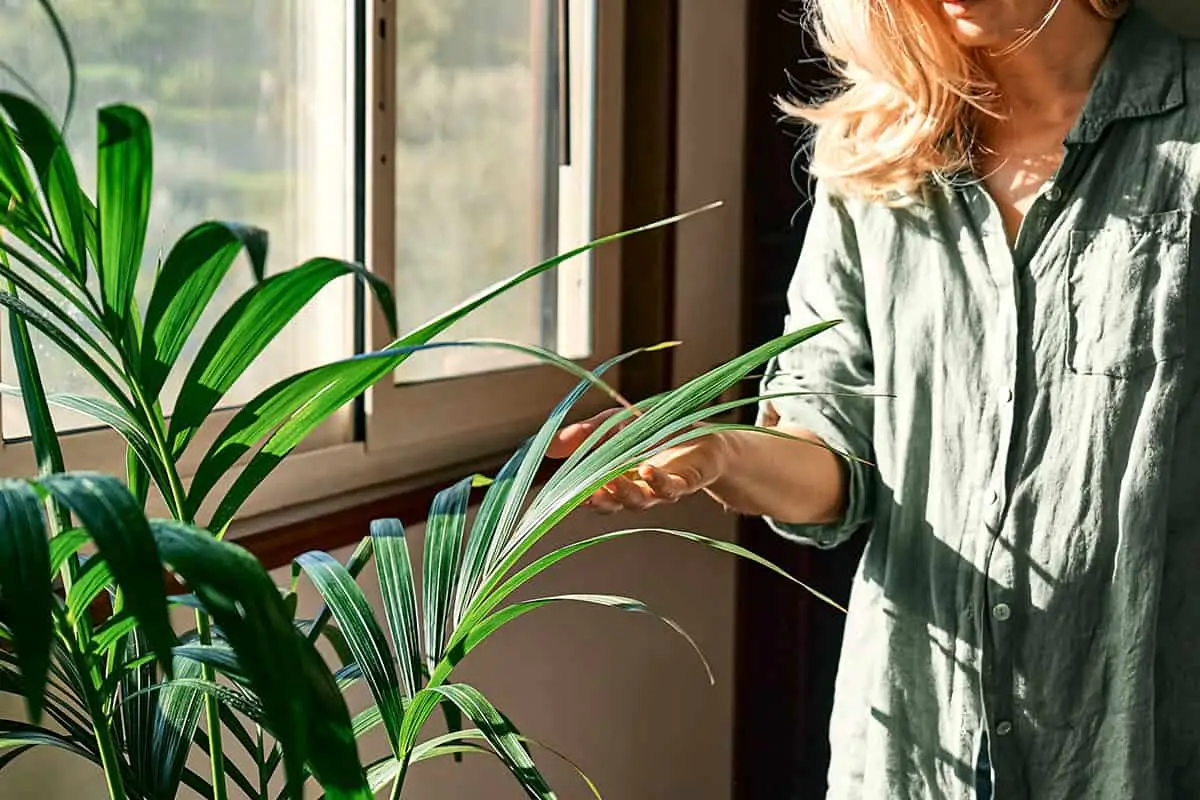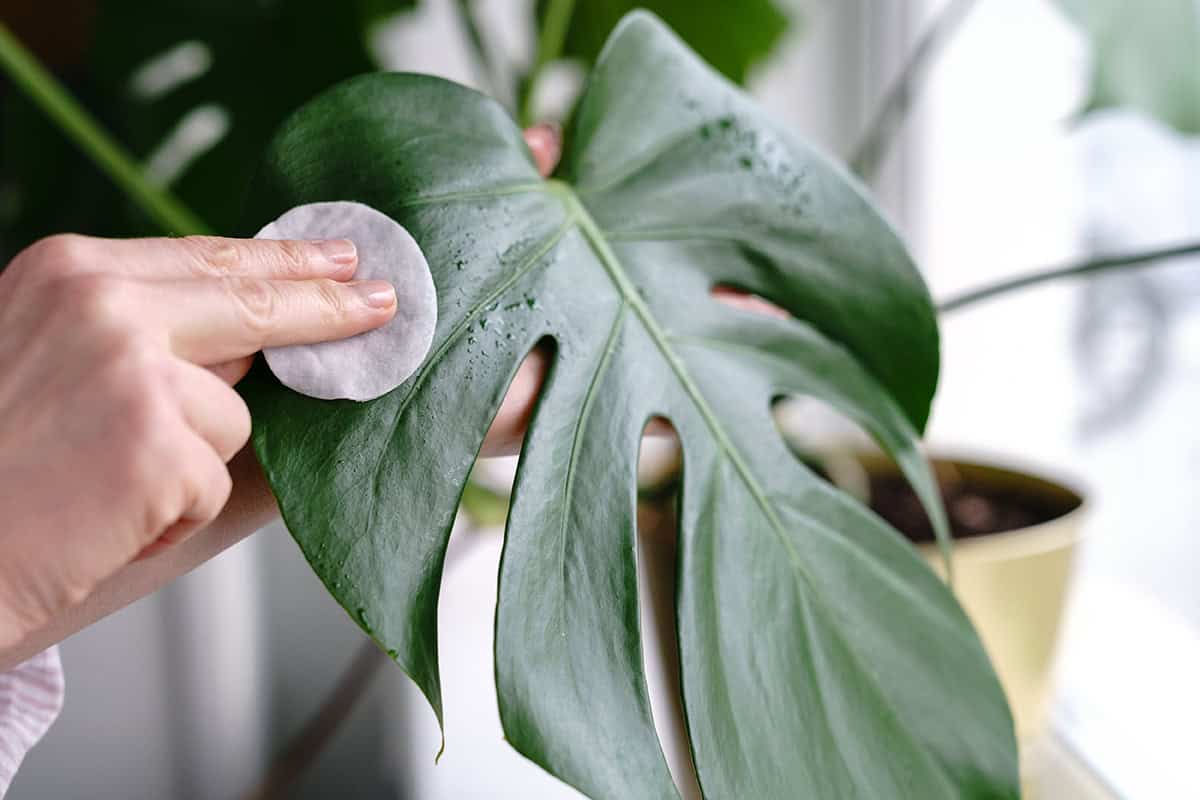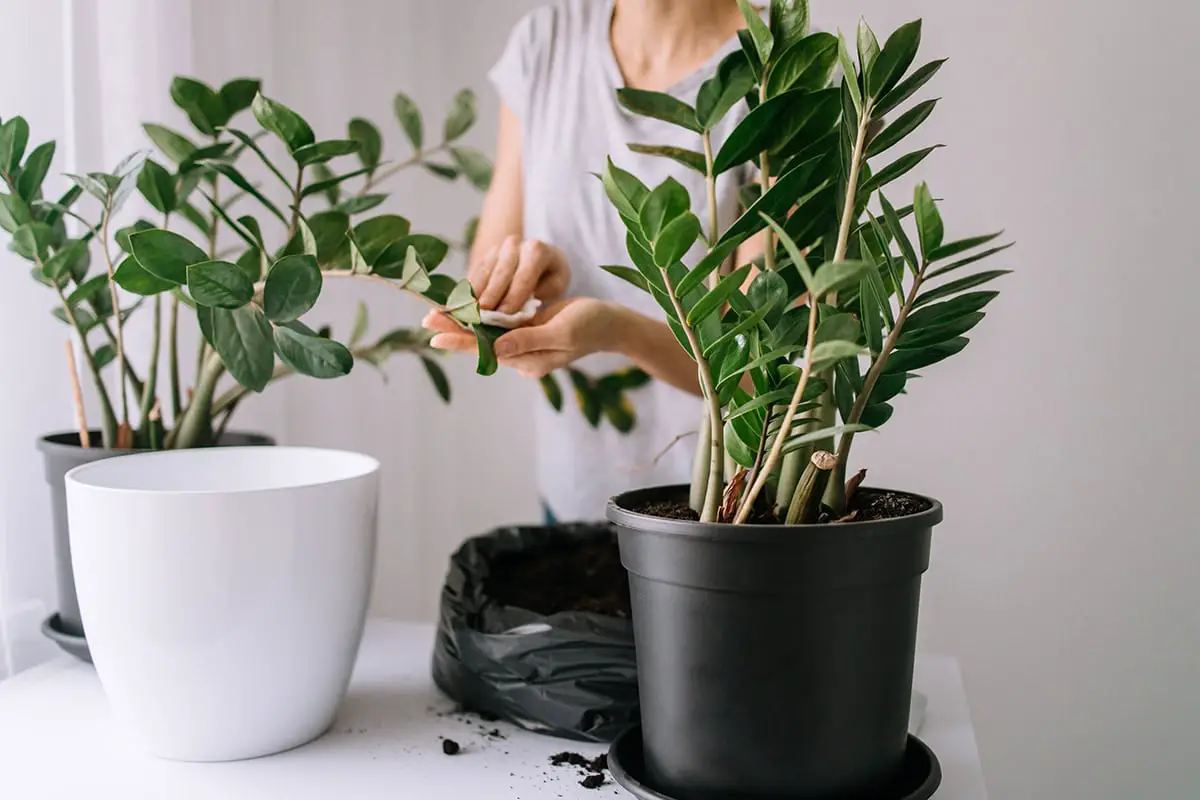You notice your favorite houseplant’s leaves are covered in dust, making it look dull and unhealthy. Clean houseplant leaves to boost their health and appearance. Discover the best methods to ensure your houseplants stay vibrant and thrive.
Table of Contents
Benefits of Clean Houseplant Leaves

Clean houseplant leaves matter more than you might think. The cleanliness of your houseplant’s leaves can directly impact the plant’s health. When you keep the leaves free from dust, more sunlight reaches them. This improves photosynthesis—the process plants use to convert light into energy.
A plant with clean leaves can better absorb carbon dioxide from the air. The increased efficiency in photosynthesis then leads to more robust growth. It allows your houseplants to flourish, producing lush and vibrant foliage.
Keeping leaves clean also promotes the detection of pests and diseases early. Pests such as spider mites and scale insects usually hide under the dust. If you clean the leaves regularly, you are more likely to spot these pests before they become a significant issue.
Lastly, plants with clean leaves contribute to aesthetic appeal. They become more pleasing to look at, which can enhance the overall look of your indoor space.
Materials Needed for Leaf Cleaning
To clean houseplant leaves effectively, you need a few items. Begin with a clean, soft cloth or a sponge. These materials gently remove dust without damaging leaves. For stubborn dirt, use a soft-bristled brush, like a toothbrush.
Mix a simple cleaning solution. Combine water with a drop of mild liquid soap in a spray bottle. This solution helps to break down grime. Remember, avoid using strong chemicals.
Collect lukewarm water in a bowl. It’s best for rinsing the leaves without causing shock. Have another dry, soft towel at hand. You will use this to dab leaves dry after cleaning.
Gather your materials in one place. This step saves time and keeps you organized while cleaning your houseplant leaves.
Pre-Cleaning Considerations
Before you begin cleaning your houseplant leaves, assess the plant’s size and leaf type. Large plants with sturdy leaves need different handling than small or delicate ones. Consider the plant’s health; if your plant appears stressed or ill, it might not withstand cleaning.
Check the environment for suitable cleaning conditions. High humidity can prolong leaf drying, inviting fungal growth. Select a location with good air circulation to aid in drying.
Additionally, ensure you have the right tools for cleaning. Soft cloths, a gentle spray bottle, and tepid water are mainstays for this task.
Be mindful of water temperature; avoid hot or cold extremes that shock the plant. And remember, when cleaning houseplant leaves, you preserve their ability to keep the air in your home clean.
Cleaning Methods

Proper cleaning methods ensure your houseplant leaves can absorb sunlight and breathe better. This section guides you through dusting, wiping, and spraying techniques to keep your plants healthy.
Dusting Techniques
You can maintain plant leaf cleanliness by regularly dusting. Use a soft brush like a paintbrush to gently dislodge dust without harming the leaves. For larger plants, a microfiber cloth effectively traps dust particles.
Gentle Wiping
For a deeper clean, gently wipe leaves with a damp cloth. Ensure the water is lukewarm to avoid shock. A dilute soapy water mixture can address grime but always follow with a clean water rinse.
Spraying and Showering
Spraying your plants with lukewarm water can be done using a spray bottle or by showering them under a gentle stream in your bathroom. This method not only cleans but also hydrates the leaves. Remember to let the leaves air-dry to prevent fungal growth.
Dealing with Sticky or Grimy Leaves

When your houseplants have sticky or grimy leaves, it’s vital to clean them properly. This ensures the plants can photosynthesize efficiently and remain healthy.
Soap and Water Mixture
You can use a simple soap and water solution to clean your houseplants. Mix a teaspoon of mild dish soap with a liter of water. Dip a soft cloth in the mixture and gently wipe each leaf. This method removes dust and most sticky substances and should not harm the plant if the soap is mild.
Rubbing Alcohol Solution
Rubing alcohol helps remove more persistent grime, such as sap or residue from pests like scales. Soak a cotton ball or soft cloth in rubbing alcohol and carefully dab the affected areas. Be sure to avoid soaking any part of the plant and test on a small area first to prevent damage.
Cleaning Plants with Furry Leaves
When it comes to cleaning plants with furry leaves, delicacy is key. These plants, including popular houseplants like African violets, have a soft, fuzzy texture that can be easily damaged.
Use a soft brush, such as a mushroom brush or a soft pastry brush, to gently remove dust and dirt. This gentle cleaning technique improves the plant’s appearance and allows better light absorption, which is crucial for growth.
While cleaning, also inspect for pests or signs of disease. These leafy houseplants might hide bugs in their fuzz, which makes routine checks important. If leaves appear dead or yellowing, you can trim them. Take care to use scissors and not to pull leaves off, as this can harm your plant.
Addressing Pest Infestations while Cleaning
When you clean your houseplant leaves, you are also checking for pest infestations. Pests can harm your plants if left unmanaged.
To begin, inspect each leaf and stem for signs of pests. Look for small insects, eggs, or webs.
To manage pests, start by spraying your plants with a gentle water stream. This knocks off pests without chemicals. It is crucial to clean all leaves evenly.
Use a damp sponge or paper towel for wiping. This removes insects and prevents mold.
If pests persist, consider non-chemical treatments. Neem oil or insecticidal soaps offer safe solutions. Apply according to the directions.
It is vital to address infestations early. This keeps your plants healthy and strong.
Frequency of Cleaning
Cleaning houseplant leaves is vital for their health. It should be part of your regular plant care routine.
Ideally, you should clean the leaves once a month. This frequency ensures that dust and grime do not block essential sunlight. Sunlight is crucial for photosynthesis, which is how your plants feed themselves.
The environment around your plants can affect how often cleaning is necessary. If your home has high dust levels or kitchen grease, you may need to clean the leaves more frequently.
In contrast, less dusty areas might allow for slightly longer intervals between cleanings. Observation is key; look for any buildup on the leaves.
Remember, different plants may have varying needs. Delicate leaves are prone to damage and may require gentle cleaning. Hardy plants can tolerate more frequent intervention.
Your cleaning method should always match the resilience of the plant’s foliage. Pay close attention to your plants’ responses after each cleaning session.
Please note: Overcleaning can stress your plants. It can lead to damaged leaves and reduced vigor. Always use a soft and gentle touch.
Lightly moistened cloths are perfect for wiping away dust. For plants with textured leaves, a soft-bristled brush can reach into crevices.
Troubleshooting Common Issues
When cleaning houseplant leaves, it’s crucial to tackle common issues. Your plant’s health can suffer from dust and grime buildup. Start by gently wiping leaves with a damp cloth. This removes dust and enhances photosynthesis by allowing more light to reach the leaves.
In some cases, you’ll notice white, powdery spots indicative of fungal problems such as powdery mildew. To manage this, remove affected leaves and improve airflow.
If leaf tips turn brown, consider your room’s humidity level. While increasing moisture is helpful, also check for over-fertilization. Both can cause browning. Yellow or browning leaves might signify overwatering, a common misstep. To prevent this, always test soil moisture before adding water. It should not feel wet or damp.
Lastly, look out for wilting, which might suggest root rot due to overwatering or poor drainage. Let the soil dry thoroughly between waterings and ensure containers have adequate drainage.






